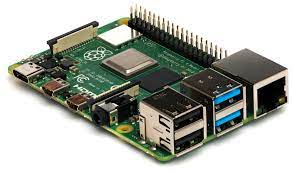
Breaking News
6.5x55 Swedish vs. 6.5 Creedmoor: The New 6.5mm Hotness
Best 7mm PRC Ammo: Hunting and Long-Distance Target Shooting
 Christmas Truce of 1914, World War I - For Sharing, For Peace
Christmas Truce of 1914, World War I - For Sharing, For Peace
Top Tech News
 EngineAI T800: Born to Disrupt! #EngineAI #robotics #newtechnology #newproduct
EngineAI T800: Born to Disrupt! #EngineAI #robotics #newtechnology #newproduct
 This Silicon Anode Breakthrough Could Mark A Turning Point For EV Batteries [Update]
This Silicon Anode Breakthrough Could Mark A Turning Point For EV Batteries [Update]
 Travel gadget promises to dry and iron your clothes – totally hands-free
Travel gadget promises to dry and iron your clothes – totally hands-free
 Perfect Aircrete, Kitchen Ingredients.
Perfect Aircrete, Kitchen Ingredients.
 Futuristic pixel-raising display lets you feel what's onscreen
Futuristic pixel-raising display lets you feel what's onscreen
 Cutting-Edge Facility Generates Pure Water and Hydrogen Fuel from Seawater for Mere Pennies
Cutting-Edge Facility Generates Pure Water and Hydrogen Fuel from Seawater for Mere Pennies
 This tiny dev board is packed with features for ambitious makers
This tiny dev board is packed with features for ambitious makers
 Scientists Discover Gel to Regrow Tooth Enamel
Scientists Discover Gel to Regrow Tooth Enamel
 Vitamin C and Dandelion Root Killing Cancer Cells -- as Former CDC Director Calls for COVID-19...
Vitamin C and Dandelion Root Killing Cancer Cells -- as Former CDC Director Calls for COVID-19...
 Galactic Brain: US firm plans space-based data centers, power grid to challenge China
Galactic Brain: US firm plans space-based data centers, power grid to challenge China
Raspberry Pi Foundation brings Wi-Fi to Pico microcontroller

Almost two million Picos have been shipped to tinkerers since its January 2021 launch, while the RP2040 microcontroller chip it's built around – which features two 133-MHz Arm Cortex-M0+ cores, 2-MB of flash storage, 264 kB of SRAM and a bunch of input/output pins – is reported to have "found its way into a huge number of third-party products."
Designed to control other hardware rather than serve as a standalone mini computer, the new Pico W is essentially the same 2 x 0.9-in (51 x 21-mm) board as before, but adds an 802.11n Wi-Fi radio so that project creators no longer have to use up valuable pins connecting bulky external network accessories. And existing Pico projects can be upgraded to the new board thanks to complete pin compatibility.
Intriguingly, the Infineon CYW43439 chip used here also supports Bluetooth 5.2 connectivity, which hasn't been enabled on the Pico W as yet but that situation could change in the future.
As you might expect, the addition of a wireless networking chip means that the Pico W is priced higher than the still available Pico – at US$6 each, rather than $4.
Two more Pico boards have also been revealed as well, which come with headers already attached to the pins plus a new 3-pin debug connector. The Pico H costs $5, is available now and is essentially an upgrade to the Pico, while the $7 Pico WH does the same for the Pico W and will go on sale in August. The video below has more.

 The State's Last Stand
The State's Last Stand


